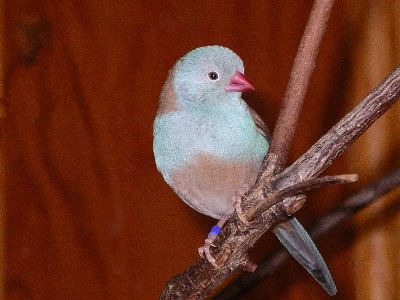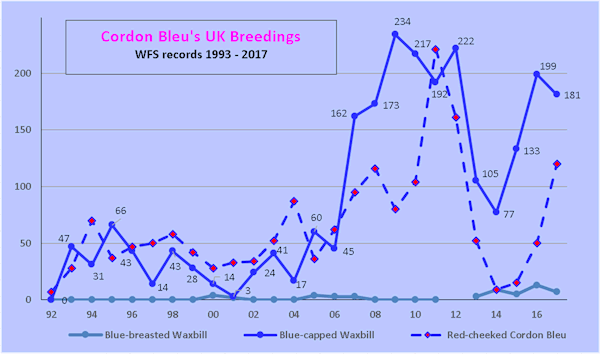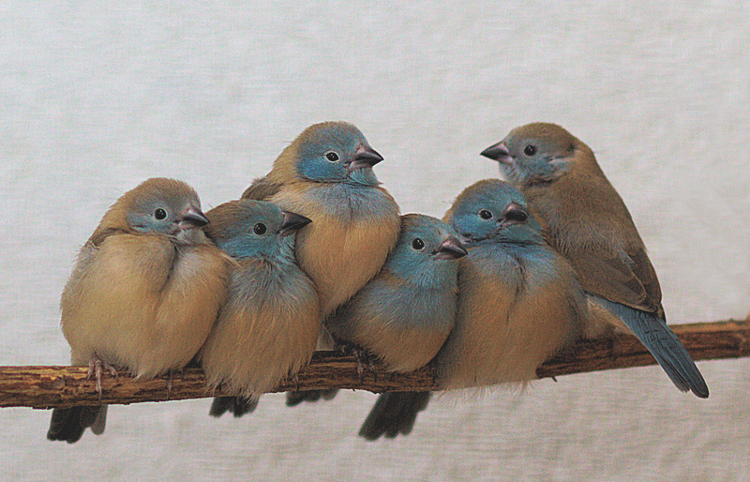Blue-capped Cordon Bleu Waxbill
Blue capped | Blue headed | Cordon Bleu Waxbill
Foster breeding, housing and feeding
Blue-capped Waxbills are more attractive than Red-cheeked Cordon Bleus?
Parent-reared Blue-capped Cordon Bleu cock
Parent-reared Blue-capped Cordon Bleu cock
How many names does he have?
- Blue-headed Cordon-bleu
- Blue-capped Cordon-bleu
- Blue-capped Waxbill
- Blue-headed Waxbill
- Uraeginthus cyanocephalus

For such a willing breeder, relatively few were 'got to the perch' in the UK pre-2007
Needs are simple but many perish between egg and perch - often abandoned or ejected
Perhaps they are too simple and breeders had moved on to more challenging ones
Fortunately several UK breeders took the Blue-capped seriously in 2007
Numbers bred by the UK WFS are now good
Needs are simple but many perish between egg and perch - often abandoned or ejected
Perhaps they are too simple and breeders had moved on to more challenging ones
Fortunately several UK breeders took the Blue-capped seriously in 2007
Numbers bred by the UK WFS are now good


Pluses and minuses of the Blue-capped Cordon-bleu
Next page deals with -
Housing
External links
Interested in Lavender Waxbills? Housing, feeding and breeding but particularly determining
gender from calls - includes recordings.
www.lavender-waxbill.com
www.lavender-waxbill.com
Interested in parrot finches? This site covers Pintailed, Blue-faced, Red-headed and
Forbes parrot finches.
www.parrot-finches.com
www.parrot-finches.com
Are you a member of The Waxbill Finch Society? An excellent Society for advice,
booklets and videos.
www.waxbillfinchsociety.org.uk/
www.waxbillfinchsociety.org.uk/
Live in the UK? Interested in helping wildlife? This site deals with creating
a wildlife-friendly garden.
www.welcomewildlife.co.uk
www.welcomewildlife.co.uk
Birds and snorkelling photography? Both are great fun. Holiday places, info.
on cameras and snorkelling.
www.snorkellingphotography.com
www.snorkellingphotography.com
To email please click on the envelop to the right. If you can't see the envelop,
click near the top of your screen to allow ActiveX)




